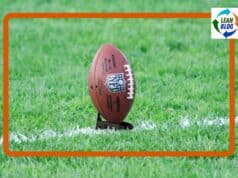Coaches grousing over mandatory helmets : Rockies : The Rocky Mountain News
Happy Opening Day to baseball fans out there. I grew up a huge Detroit Tigers fan (and a highlight was that championship 1984 season) and still like the game (although I'm not as encyclopedic as I was as a kid). Since the first two games were “outsourced” to Japan (that's an attempt at a joke, not outrage), this is not the first game of the season, but it's a new stadium in D.C. and the President threw out the first pitch. Pretty cool.
I'm sort of regretting my headline… it was admittedly a stretch to find baseball terms that fit the typical Lean “SQDC” model (Safety, Quality, Delivery and Cost). No, I haven't had too many opening day beers!

It wasn't a particularly proactive rule, since there have been many near misses and it's a known danger in the game, especially when coaches stand outside of their “coaches box,” putting themselves CLOSER to the hitter than they are supposed to be. The coaches have long violated the “Standardized Work” (if you will), but I don't recall ever seeing that rule enforced by umpires (can be ejected from the game, technically). Coolbaugh was standing in the box when he was struck.
As with any story, there are too sides. You might ask, “How can you question wearing helmets? Safety is paramount!”
But many coaches are upset about the new rule, as the article I linked to at the top of this post indicated (or do a google news search on the topic and you find a lot of articles about coaches complaining).
What are the coaches complaints?
- Nobody talked to us
- We're unlikely to be hit in the top of the head, so what good are the helmets? (Coolbaugh was hit in the neck, remember)
- Pitchers are in a dangerous position, why don't they wear helmets?
- If helmets are safe, why not full football helmet facemasks?
Complaint #1 is the most interesting. I wonder how much of the other complaining is triggered by the fact that the decision was made by an executive in New York and that decision was made without talking to the coaches. It's a general Lean principle that we should have “respect for people” and involve people in decisions and process improvement. Sounds like baseball execs, even if they're right, got everyone riled up by forgetting to respect and involve the coaches, the ones at risk.
Do you recall hearing similar complaints when safety glasses were first made mandatory in your factory? There are all sorts of parallels — maybe people weren't involved, execs had no choice but to put the rule in place. Maybe there had never been an eye injury in the factory (just a lot of close calls). Maybe someone said “yeah, you're protecting my eyes, but what about my neck or hands?”
No easy answers. I'm sure, as with safety glasses, the helmets will seem normal to everybody before long, even the coaches. It just struck me that this fits a pattern of recent “top-down” decisions from sports leagues that didn't involve the players. First, it was the NBA and the new ball controversy, then the NHL and the new jerseys. In both cases, there was backpedaling after players complained — the NBA went back to the old ball and some NHL teams have ditched the new jersey material for the old.
What do you think? Either in the case of baseball safety, or parallels you might use at work when talking about safety and rules?
Subscribe via RSS | Lean Blog Main Page | Podcast | Twitter @MarkGraban
Please scroll down (or click) to post a comment. Connect with me on LinkedIn.
Let’s build a culture of continuous improvement and psychological safety—together. If you're a leader aiming for lasting change (not just more projects), I help organizations:
- Engage people at all levels in sustainable improvement
- Shift from fear of mistakes to learning from them
- Apply Lean thinking in practical, people-centered ways
Interested in coaching or a keynote talk? Let’s talk.
Join me for a Lean Healthcare Accelerator Trip to Japan! Learn More










Very nice post. I agree. When you make decisions from the top down, they are likely to fail IF you do not also consult the people.
I agree that the decisions must start somewhere, and the top would be a good place to show management is serious. But once you have the concept, you need to bring this to the people and ask them their opinion before you just implement something.
Mike
Leam Manufacturing Secrets
I grew up in Detroit – a very long time ago.
Forget 1984. The truly great championship season for the Tigers was 1968!
Dodgers 3rd base coach Larry Bowa (an infamous hot head) got ejected from the game last night after an umpire told him to get back into his coaching box. Bowa threw a fit arguing and got ejected.
LINK
Sounds like MLB is trying to enforce that std work:
“Major League Baseball announced in late February that starting this year, first- and third-base coaches must not cross the lines toward home plate or the field until batted balls pass them. Only then can they take up other spots to guide runners.”
Great post. I am struck how “Nobody talked to us” is at the top of the list. So simple and yet talking with people is forgotten time after time. BTW, I referenced your post in my blog today.
Rick Maurer
blog: http://www.changemanagementnews.com
website: http://www.beyondresistance.com